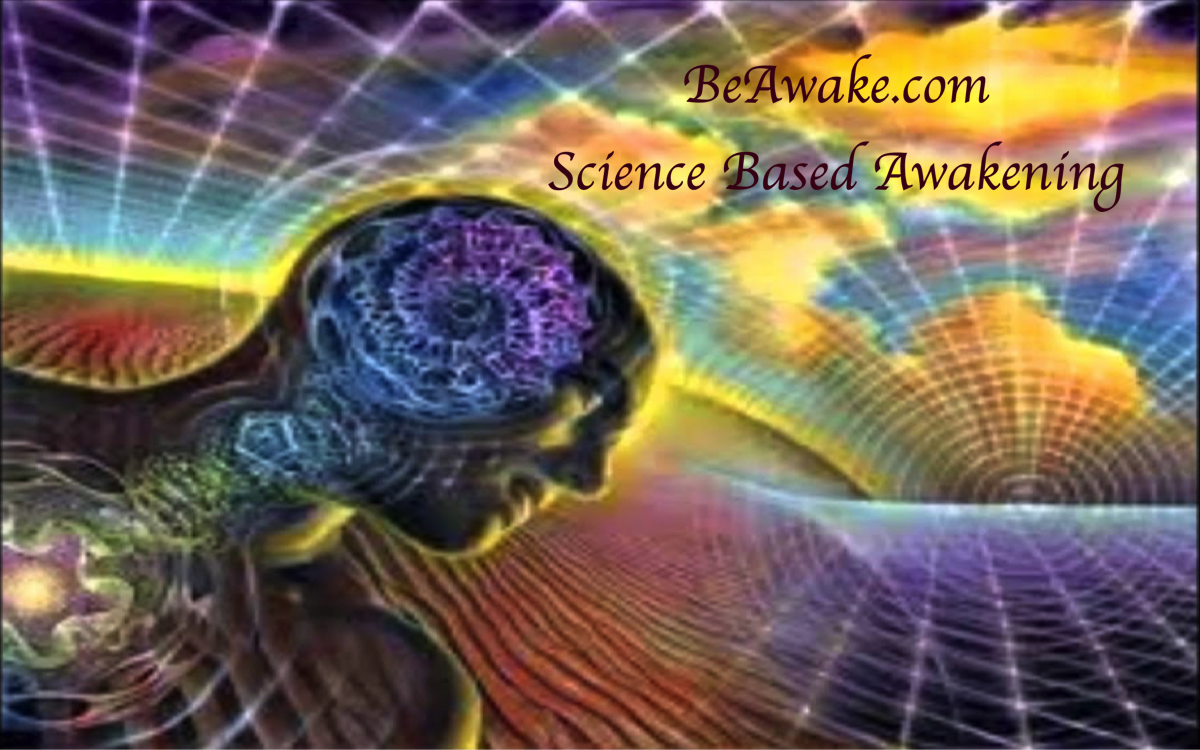Before the recent discoveries in quantum mechanics, mainstream science was locked into the idea that anything that is not material or tangible cannot exist. Conventional science became dogmatic postulating that everything is material, and whatever is not material cannot exist. This theory has never been proven to be true. This dogma has persisted despite its rejection by some of the leading scientists of the 20th century.
Albert Einstein’s theory of relativity changed the world. It introduced a new framework for all physics and proposed new concepts of space and time. Einstein’s theory of relativity states that all motion must be defined relative to a frame of reference and that space and time are relative, rather than absolute concepts. Despite the fact that Albert Einstein contributed more to the advancement of modern science than any other scientist in history, he did not fully comprehend the theory of quantum physics. Einstein called quantum mechanics “spooky action at a distance.”
For an introduction to quantum physics, see the companion article, Quantum Physics and Consciousness.
The Basics of Quantum Mechanics
Quantum mechanics most certainly is bizarre and somewhat inexplicable. It is however scientifically proven fact. According to Niels Bohr, the father of the orthodox ‘Copenhagen Interpretation’ of quantum physics, “Anyone who is not shocked by quantum theory has not understood it.” Einstein was sure that the only way information could travel instantaneously between particles could never be faster than the speed of light. However, quantum physics scientists have proven that material forms are actually vibrations of more subtle and invisible energy. Repeated experiments in quantum physics called the ‘double-slit experiment’ (explained simply in this video) shows us that matter exists as probabilities and tendencies rather than absolute things. This experiment revealed that there is an observer effect which is the theory that the mere observation of a thing changes it.
Quantum Theory and Heisenberg’s Uncertainty Principle has also proven the idea of nonlocality which describes the ability of objects to instantaneously know about each other’s state, even when separated by enormous distances, almost as if the universe instantaneously arranges its particles in anticipation of future events. This theory contradicts the assumptions of local realism found in classical mechanics. I know it sounds like science fiction. It’s not; it’s science fact. These findings provide proof of nonlocal consciousness and support the existence of phenomena such as life after death and death-bed visions, mediumship, near-death experiences, out-of-body experiences, and reincarnation.
Neuroscientist Mario Beauregard, in his acclaimed book, Brain Wars: The Scientific Battle Over the Existence of the Mind and the Proof That Will Change the Way We Live Our Lives, unveils irrefutable new evidence which has created a major new shift in our understanding of the mind-body debate. His research shows that consciousness is transmitted and filtered through the brain. It is not generated by the brain. Beauregard explains how and why consciousness is nonlocal and cites a range of scientific studies challenging many widely held materialistic assumptions about the relation between the mind and brain.
Quantum Entanglement experiments established the existence of nonlocal consciousness. The very first quantum entanglement experiment was published in a 1935 paper by Albert Einstein, Boris Podolsky, and Nathan Rosen and Erwin Schrödinger. They took two related particles and separated them into two different locations. They spun one particle and instantly the other one started to spin. They were communicating with each other! The two particles were in a quantum entangled state.

In “Imaging Bell-type nonlocal behavior” (July 2019), scientists from the University of Glasgow reported taking the first-ever photo of a strong form of quantum entanglement known as Bell entanglement. This is a huge leap in furthering the evidence in quantum physics and nonlocal consciousness.
Near-Death Experiences (NDEs)
In the past scientists believed that human consciousness was defined as measurable brain wave activity. The only way thoughts and feelings are manifested are through electrical discharges from neurons in the brain. They felt that the near-death experience (NDE) was nothing more than a pre-death hallucination in a dying brain triggered by neurons that are deprived of oxygen.
A person dies when brainwaves have flatlined yet this is precisely when most near-death experiences occur. The person is suddenly aware and lucid and can experience sight, sound, smell, and touch. They can see what is happening around their body. The colors seen are so vivid that many can’t even describe them in terms of ordinary colors. Their life flashes before their eyes, thoughts racing through the mind with extreme rapidity. Their perception magnified, and in many cases, the lessons of their life are immediately understood indelibly recorded in memory.
How could all of these kinds of thoughts occur while the brain is flat-lined? How could a patient describe in detail seeing their body and perhaps being worked on by medical professionals?
When patients described their NDE’s it was brushed off as pseudo-science. The main difficulty in validating NDEs to the scientific community is that those experiences are usually spontaneous, unpredictable, and are not amenable to controlled experiments. This is an unfair standard of proof. When Einstein published the general theory of relativity in 1915, the only way that theory could be tested was through astronomical observations of the Sun during a solar eclipse. That was not a controlled experiment. It was simply an observation.  It may still be true that the physical neurons in the brain control how we think and how we move. However, it is most likely not the only way we receive our consciousness. Much research into quantum theory proves that consciousness is nonlocal.
It may still be true that the physical neurons in the brain control how we think and how we move. However, it is most likely not the only way we receive our consciousness. Much research into quantum theory proves that consciousness is nonlocal.
New evidence reveals that a near-death experience happens when quantum substances which form the soul leave the nervous system and enter the universe. This theory has been developed by Dr. Stuart Hameroff, Professor at the Departments of Anesthesiology and Psychology and the Director of the Center of Consciousness Studies at the University of Arizona working in conjunction with British physicist Sir Roger Penrose. Based on a quantum theory of consciousness they propose that the essence of our soul is contained inside structures called microtubules within brain cells. They believe that our experience of consciousness is the result of quantum gravity effects in these microtubules, a theory which they dubbed ‘Orchestrated Objective Reduction’ (Orch-OR).
Therefore our souls are not just the physical interaction of neurons in the brain. They may indeed be constructed from the very fabric of the universe – and may have existed since the beginning of time. Hamerhoff states that during a near-death experience the microtubules lose their quantum state; however, the information within them is not destroyed. Instead, it merely leaves the body and returns to the cosmos. “If the patient is resuscitated, revived, this quantum information can go back into the microtubules and the patient says, ‘I had a near-death experience’…If they’re not revived, and the patient dies, it’s possible that this quantum information can exist outside the body, perhaps indefinitely, as a soul.”
Hamerhoff researchers from the Max Planck Institute for physics agree; they state that the physical universe that we live in is only our perception and once our physical bodies die, there is an infinite beyond. One of those researchers, Dr. Hans-Peter Durr, former head of the Max Planck Institute for Physics, previously said: “What we consider the here and now, this world, it is actually just the material level that is comprehensible. The beyond is an infinite reality that is much bigger…our lives in this plane of existence are encompassed, surrounded by the afterworld already…The body dies but the spiritual quantum field continues. In this way, I am immortal.”
The Science of Reincarnation
Psychiatrist, Ian Stevenson who was chair of psychiatry at the University of Virginia (UVA) studied thousands of cases of reincarnation and his work was published in The Journal of the American Medical Association, The American Journal of Psychology, and The Lancet. When he died in 2007 Jim Tucker also a psychiatrist took over the research at UVA. He is one of the world’s leading researchers on the scientific study of reincarnation or rebirth. Tucker has written two books summarizing the research, Life Before Life, and Return to Life. In Life Before Life, Tucker writes, “The best explanation for the strongest cases is that memories, emotions, and even physical injuries can sometimes carry over from one life to the next.” The UVA library houses 2,500 detailed records of children who have reported memories of past lives. Children in rebirth cases generally start making statements about past lives between the ages of two and four and stop by the age of six or seven, which is the age when most children lose early childhood memories.
Conclusion
Quantum physics scientists have proven that material forms are actually vibrations of more subtle and invisible energy. Our consciousness (soul) is not just the physical interaction of neurons in the brain. It may indeed be constructed from the very fabric of the universe – and may have existed since the beginning of time. The findings of quantum physicists over the last century suggest proof of nonlocal consciousness and support the existence of phenomena such as life after death, mediumship, near-death experiences, out-of-body experiences, reincarnation, and death-bed visions.
The BeAwake.com resource pages cover each of these subjects in-depth and provide Science-Based Libraries that link to books written by the top experts in their respective fields (these pages are accessible on the BeAwake.com Resources menu).

